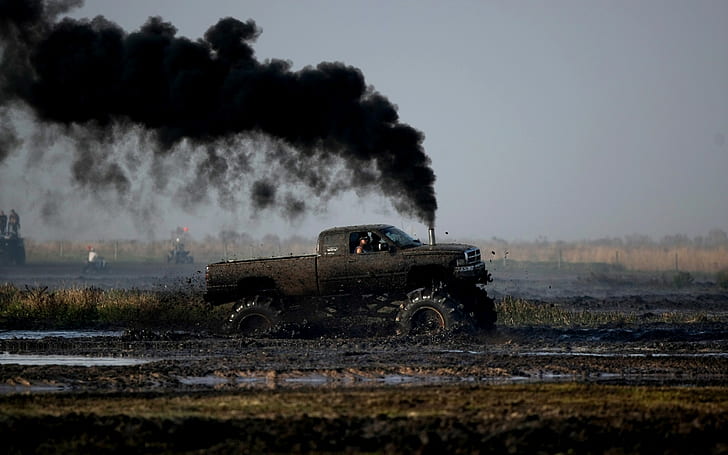Gas prices at the pump have been exorbitantly high for drivers of gas-consuming vehicles. About half of the unexpectedly high increase in consumer prices in March 2022 was caused by gasoline. However, another fuel that the majority of Americans will never use is driving up the cost of goods and shaking the freight sector.
The bigger story here is probably how much diesel costs. The cost is unquestionably rising. On March 12th, 2022, not long after Russia invaded Ukraine, diesel reached its all-time high price. According to economists, the increase in diesel prices is causing inflation to rise globally. Diesel fuel powers everything we purchase at the grocery store and have delivered to our homes. Businesses that want to transport goods from one place to another depend on diesel. Companies are spending more. As consumers, it will cost us more money.
The roughly 2 million trucking companies across the nation are suffering significantly as a result of the increase. They are overwhelmingly small businesses. Due to my increased spending on diesel for roundabouts—just let’s say, for the sake of argument, that I spend $10,000 one week at these rates—I have lower profit margins.
I spend between $17 and $18000 per week. Freight business insiders predict another bloodbath because the sector is prone to frequent booms and busts. When fuel prices rise as much as they have over the past few months, a lot of trucking bankruptcies typically follow because small business owners who depend primarily on the cash flow from their trucking operations are unprepared and lack the balance sheets and cash position to withstand these sudden shocks to their cash flow.
Why High Diesel Prices Drive Up to the Cost Of Everything
Diesel makes up more than 25% of the energy used by the transportation sector. Fuel bearing Rudolf Diesel’s name honors the man who invented the diesel engine, which uses incredibly high compression to ignite fuel. Diesel engines are run on distillate fuel. Like gasoline, diesel is made from crude oil, but it is heavier. There are several types of distillate fuel.
Diesel is the term used to describe the substance used in diesel engines. In essence, this means that because diesel engines produce more low-end torque than gasoline engines, the engine doesn’t have to work as hard to deliver power. Therefore, diesel engines are great for heavy-duty vehicles that need to haul or climb.
Compared to gasoline engines, diesel engines typically have a much higher fuel efficiency per mile. The majority of goods-moving vehicles, such as ships, barges, trains, and trucks, run on diesel fuel as a result. Both farming and construction equipment use it. The trucking companies in charge of transporting those goods end up paying much more to get their goods from point A to point B whenever diesel prices rise. It serves as the fuel for the economy. Everything is reachable by truck and train, including supplies, hardware, shops, and clothing. The logistics and transportation systems will be significantly impacted, and things will only get worse.
Impact On Inflation
Russia is one of the top crude oil producers in the world. In 2021, it is expected to ship out 4.7 million barrels of oil every day. These exports went to markets in Europe in the amount of 2.4 million barrels. Due to its production of medium to heavy sour crude oil, Russia is able to make heavy refined products like diesel fuel. Since more than 40% of cars in Europe run on diesel, the rising demand for diesel is a big reason why fuel prices are going up. Along with crude oil, Russia sent 750,000 barrels per day of diesel fuel to Europe in 2021. This was enough to meet 10% of Europe’s needs.
The International Maritime Organization’s new fuel rules for ships, which go into effect in 2020, say that ships must use fuel that is similar to the diesel that truckers use. This rule was changed because of the global energy crisis that happened in the fall of 2021. This crisis was made worse by Russia’s decision to stop sending natural gas to Europe. Also, countries like China that didn’t have much coal started burning more diesel to make electricity. The capacity of refineries has also been an issue since many of them across Canada are switching to biofuels. This has led to short outages.
Even though there is a shortage of diesel fuel around the world, the United States is still a net exporter of diesel fuel. At the middle of April 2022, the US only brought in 154,000 barrels of distillate fuel while sending out 1.74 million barrels. Even so, the growing need for diesel fuel has caused prices to go up for both consumers and businesses around the world. Due to the diesel fuel shortage, small trucking companies are having trouble getting cash. If diesel fuel prices keep going up, this could lead to bankruptcy.
US Consumer Price Rise At Fastest Rate In Nearly 40 Years
In the meantime, prices have been increasing for a while now for a variety of goods and services. In the recent period, two things have happened. The pandemic has disrupted global supply chains, led to shortages in a variety of products, including consumer electronics and vehicles, and driven up prices. Then, more recently, the Russian invasion of Ukraine disrupted the markets for oil, agricultural products, and commodities, which led to an increase in prices, especially for gasoline and, of course, diesel. In March and April 2022, the difference in price between diesel and gasoline was about $1. That is significantly higher than the 30 to $0.40 and a record high.
Over the past few decades, that has generally been the case. According to Zandi, the increase in consumer prices over the past year can be attributed to diesel costs in about 1/10 of cases. Likewise, 17% of the increase in the cost of goods is increasing. The average annual rate of inflation is around 2%. If you add up all the things you purchase—goods and services—and compare the prices today and a year ago, you would typically find that they have increased by about 2%.
As a result, you hardly even notice it. Today’s inflation rate is 8%. Between two and eight, there is a significant difference. And eight feels like. When you go grocery shopping, you can feel it. When you fill your gas tank, you can feel it. Zandi predicts that as the Federal Reserve raises interest rates, this will moderate. The Fed’s current objective is to somewhat slow down the rate of economic growth and demand, and they achieve this by raising interest rates. As a result, it becomes more expensive to buy a house or a car, and for businesses to invest in and hire new employees. And as a result, the economy’s growth is slowed and inflationary pressures are lessened to some extent. The Fed can only do so much, though. Supply is primarily responsible for the inflation issue.
Supply chains and labor markets are endemic. Russian aggression is the cause. It is difficult for the Fed to reduce inflation when working on a problem whose causes are unrelated to things they can control, as they really have no control over any of that.
The Troll On Trucker
Trucking will suffer despite lower gas and grocery prices. 2 million US trucking companies existed in February 2021. Most are small. 90% have six or fewer trucks. 97% are under 20. Few large trucking companies can afford to buy diesel wholesale. Most companies buy fuel at the pump like other drivers. Truck stops immediately adjust pump prices when these prices rise. If wholesale prices drop, large trucking companies will too. However, pump prices move slowly. Truck stops prolong their rise. Small trucking companies that buy fuel at retail pay much more than larger trucking companies. Diesel surcharges should help companies offset diesel fuel price increases. Shippers paying trucking companies to move their goods pay fuel surcharges. Trucking companies use fuel surcharge relationships to offset rising diesel prices.
Bigger companies benefit again. Larger trucking companies usually have fuel surcharge contracts. Small truckers don’t. Small trucking companies mostly operate in the spot market, so they pay for fuel from customer charges and must absorb any increases. The larger trucking companies can mostly pass those increases off in fuel surcharges, which offsets their fuel price exposure. Latoya and Lyle Hankins run Dow Trucking. He has 16 trucks in South Carolina.
BMW and Dollar General, both South Carolina-based, are good partners. Truckers returning from out-of-state trips must use brokers to sell their loads. Returning from brokers requires a spot. Fuel surcharges are rare. Hankins purchases diesel retail. Fuel pump prices are brutal. I was at the pump with one of my drivers when he changed the sign and the guy across the street changed his sign. He went up 2 cents and the guy across the street went up 3 cents. His sign increased by 4 cents. They looked at each other, thumbed up, and went up 5 cents. Really? Me? Fuel spikes have been another challenge for the business in recent years. Everything changes. Always uncertain. Canceled loads. Loads fail. Some loads are a month and a half out, and logistical issues may have delayed them by two weeks. It’s illogical. To survive and grow, Hankins has tried new businesses.
He does more intermodal trucking. Trucks load shipping containers directly. Added gear. He started trucking classes. Dow provides roadside assistance. He tried Web3 business ideas. Web3 and trucking seem odd. It’s another market we hadn’t explored. Despite a trucking industry revival, we’ve tapped into it. NFTs exist. It’s just working differently to survive. We’re now moving things with cryptocurrency instead of dollars. Hankins said he is luckier than friends trying to leave the business. I can absorb losses and float fuel prices. I can sustain the losses I’m taking, but other people I know can’t because they’re newer and don’t have the capital. Price drops are uncertain.
One petroleum analyst predicted high prices for 6–12 months in April 2022. Given the possibility of Russian oil sanctions. It depends on US producers’ production speed. They face supply chain shortages like many other companies. Gas prices have increased interest in electric and hybrid cars and SUVs. Trucking. Insiders say large electric semi trucks won’t take over highways anytime soon. Trucking companies shouldn’t invest in electric vehicles because there’s no infrastructure. The trucks themselves have not been proven to haul freight across the country and match diesel truck performance or unit economics. We don’t expect it. It may take years. Since 2020, numerous supply shortages have starved the global economy. Diesel fuel, like many other scarce commodities, has no short-term alternatives. Diesel engines will move everything for now, regardless of cost.





Leave a Comment
You must be logged in to post a comment.